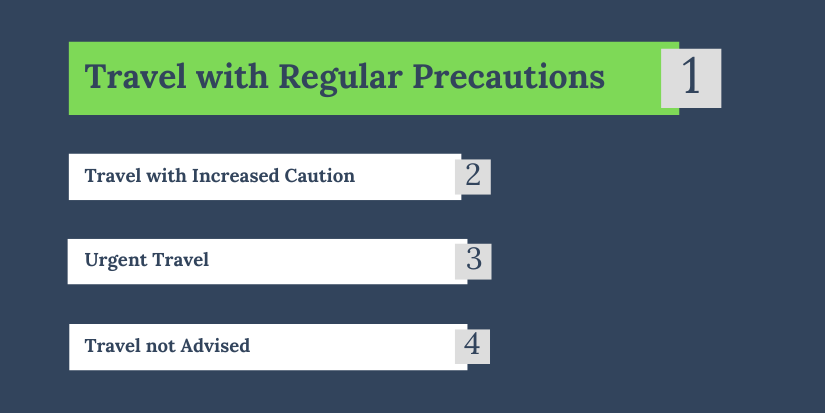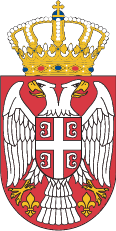
VISA REGIME
For holders of national passports and other travel documents: A visa is not required for stays of up to 90 days in a 180-day period
For holders of diplomatic and official passports: A visa is not required for stays of up to 90 days in a 180-day period
Note: Visa required for holders of passports and other travel documents in transit, except for travellers coming from Schengen countries
ENTERING AND LEAVING THE COUNTRY
Citizens of the Republic of Serbia are permitted to stay in Poland up to 90 days within a period of six months, as in other EU and Schengen area member states. A valid passport is required to enter Poland and, depending on the purpose of visit (tourist, business, private), border authorities may ask for additional documents, including proof of means of subsistence during the stay, travel health insurance, letter of invitation a legal or natural person, address of residence while in the Republic of Poland, etc.
Along the border with Lithuania and Germany, Poland on July 7, 2025, introduced temporary controls on the movement of people and vehicles coming from these two countries (entry into Poland) in order to combat illegal migration. These controls are planned to last until August 5, 2025, although there is a possibility that this period could be extended. While long queues are not expected, travelers entering Poland from Lithuania and Germany, particularly those heading to places like Warsaw Airport, are advised to factor in extra time for border checks when planning their trip.
Entry of citizens of Serbia into the territory of Poland from the direction of Belarus and Russia (Kaliningrad region)
Since the outbreak of the conflict in Ukraine, the relevant Polish authorities have prohibited the entry of nationals from third countries attempting to cross the land/road border from Belarus and Russia (Kaliningrad region) into Poland for transit purposes. Entry is only allowed for Polish citizens, EU nationals, residents of Schengen zone countries, diplomatic diplomats, or foreigners with a valid residence permit in Poland or another EU or Schengen country (residence card or D visa for long-term stay). For other foreign nationals, including Serbian citizens, entry into Poland is granted only in strictly justified cases (health issues, death, etc.), and the final decision on entry is made by the on-duty Polish border police officer at the specific border crossing upon the individual's arrival, in consultation with immediate management and the headquarters of the Border Guard in Warsaw.
Citizens of the Republic of Serbia who wish to return to Serbia from Russia (Kaliningrad region) via Poland are advised to contact the Embassy of the Republic of Serbia in Warsaw prior to their departure by email at embassy.warsaw@mfa.rs or consular.warsaw@mfa.rs, so that the Embassy can notify them of their crossing. Please note that this notification does not guarantee that Serbian citizens will be allowed entry and transit through Polish territory. The notification is only a request to Polish authorities to permit entry for Serbian citizens, and the final decision regarding the entry of Serbian nationals into Poland is made by the border police officer conducting passport control at the border crossing.
A border crossing between Poland and the Kaliningrad region has been opened: Grizhotki (PL) – Mamonovo 2 (RF). Our citizens can use this border crossing to exit Poland towards the Kaliningrad region, but not for returning to Poland (except with prior notice to the Embassy, which does not guarantee entry). Therefore, we recommend that citizens, if not necessary, do not use this border crossing for returning to Poland and instead re-enter Poland from the Kaliningrad region via Lithuania, where no prior notice is required and there are no restrictions for third-country nationals and citizens of the Republic of Serbia. Since Lithuania is part of the EU and Schengen Area, once inside Lithuanian territory and until Hungary, there are no border crossings to the Republic of Serbia. Currently, two border crossings are open for passenger traffic between Lithuania and Belarus: Medininkai (LT) – Kamiani Log (BY) and Šalčininkai (LT) – Beniakoni (BY). Our citizens can use these crossings for travel to and from Belarus and Lithuania.
Based on the Regulation of the European Union on restrictive measures against the Russian Federation, from September 2023 it is not possible to enter the territory of Poland and Lithuania with cars registered in Russia. The ban on entry of cars with Russian license plates applies regardless of the driver's nationality. Similar bans exist on the territory of Latvia, Estonia and Finland.
SOCIAL SECURITY AGREEMENT
The 1958 Agreement between the Government of the Polish People's Republic and the Government of the Federative People's Republic of Yugoslavia on social insurance is still in force and covers health insurance in emergencies without any particular requirements.
USEFUL INFORMATION
TRANSPORT — Serbian driving license in new standard format can be used in transit or for a period of 6 months from the date of obtaining permanent or temporary residence, but not longer than the period of validity of the driving license. Serbian driving license can be exchanged for a Polish driving license by initiating proceedings before the competent Polish authority in the place of residence.
The Republic of Serbia and the Republic of Poland are parties to the so-called License plate subsystem, and as of 1 January 2012 no Green card certificate is required for vehicles registered in the Republic of Serbia to travel to the Republic of Poland.
OTHER INFORMATION — The PLN (Polish zloty) is the national currency used in Poland. All convertible world currencies can be exchanged easily at exchange offices. Payment cards (Visa, MasterCard) are generally an accepted means of payment.
Contact information
For consular assistance and protection while in Poland, please contact the Embassy of the Republic of Serbia in Warsaw, address Al. Roż 5, 00-556 Warszawa, tel. +48 22 628 51 61, +48 22 625 60 41, fax: +48 22 629 71 73, and e-mail: embassy.warsaw@mfa.rs.
